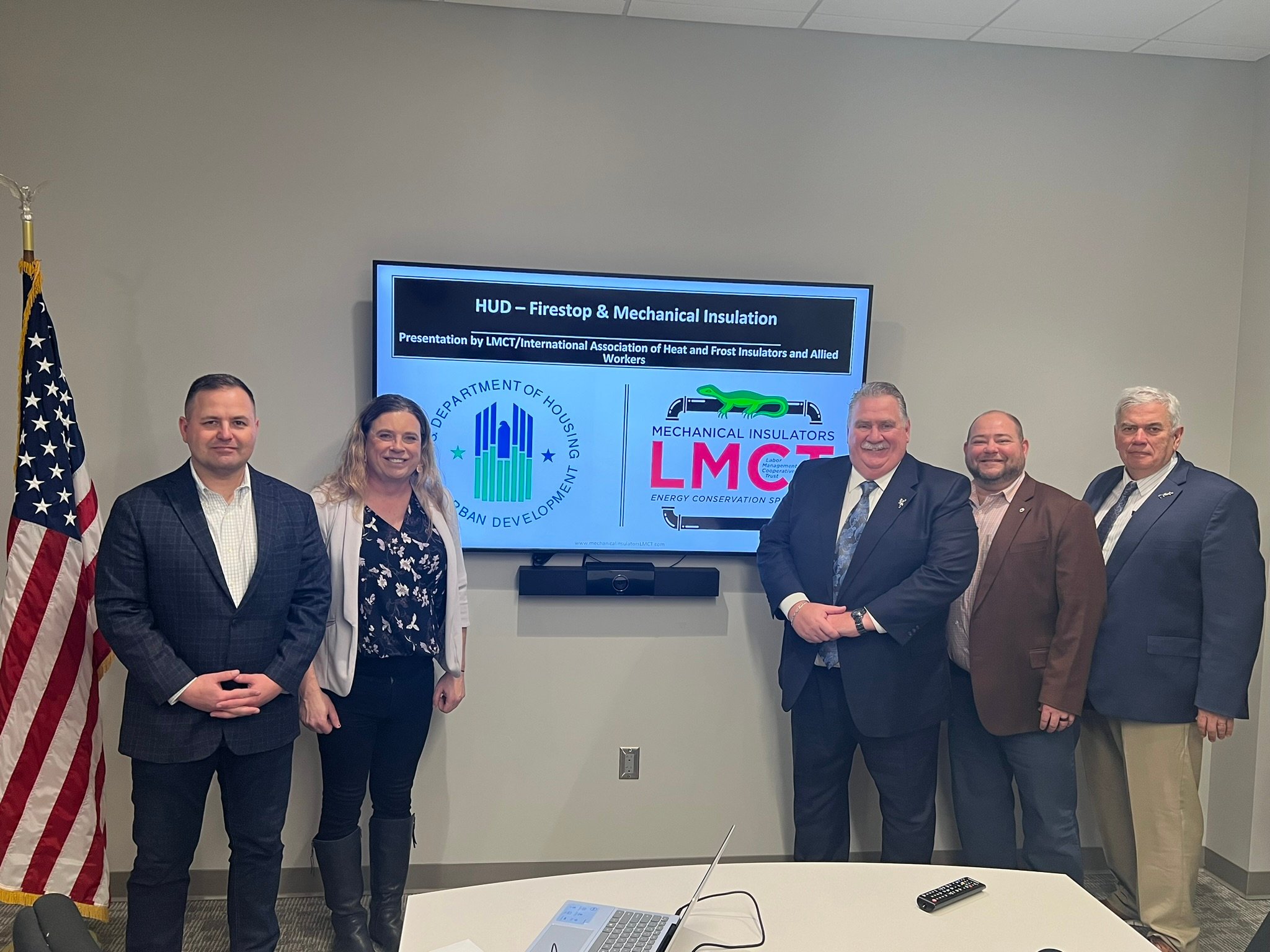
The Mechanical Insulators LMCT hosted leaders from the U.S. Department of Housing and Urban Development (HUD) at the Insulators Local 24 Union Hall/Training Center to discuss Mechanical Insulation and Firestop technologies and how they could benefit HUD.
HUD is the federal agency responsible for national policy and programs that address America's housing needs, improve and develop the nation's communities and enforce fair housing laws. Its mission is to create a decent home and suitable living environment for all Americans, as the department underwrites homeownership for lower- and moderate-income families through its mortgage insurance programs. Among other programs, it also provides public or subsidized housing for low-income individuals and families.
HUD Deputy Assistant Secretary Ashley Sheriff and Senior HUD Advisor/NSPIRE Standards Lead Cliff Kornegay along with staff members from two members of Congress – Luis Murillo, a staff member of Rep. Glenn Ivey (D-Md.), and Kenneth Simons, from the office of Sen Van Hollen (D-Va.) – took part in the event.
The group toured the Local 24 Union Hall and Training Center to gain a better understanding of the Insulators Union, the work performed by the union’s members and the training union Insulators receive in order to perform high-quality work.
They were able to explore the Local 24 Mechanical Insulation workshops and were not only shown the installation of Mechanical Insulation, but also took part in a hands-on demonstration.
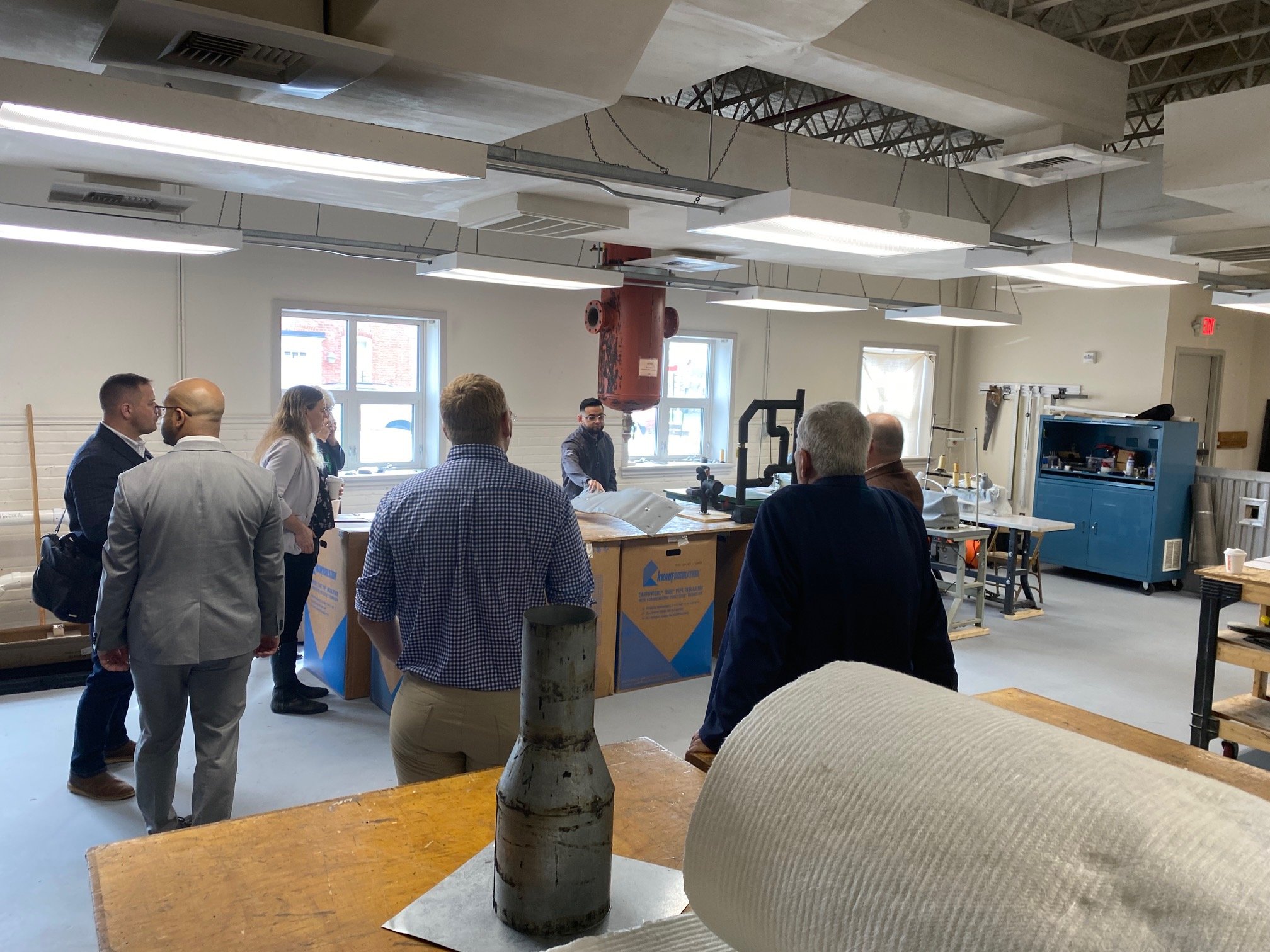
Additionally, the group spent time in the Firestop and Smokeseal workshops, where they saw the Firestop concepts most people cannot see physically in a building, as these technologies are usually hidden.
Insulators Union Middle Atlantic States International Vice President Brian Cavey, Local 24 Business Manager Julio Caicedo and Local 24 Training Coordinator James Hoos helped give the tour and explained the many facets of being in a union and the training that goes along with it.
Not only did they stress that the Training Center is privately funded through its Collective Bargaining Agreement with the Local’s signatory contractors, but they also highlighted the importance of having a qualified and competent workforce install Mechanical Insulation and Firestop materials in order to save lives and money.
“Anybody can buy the materials, but only trained craftsman will install it correctly,” said Cavey about Firestop. “This means life or death.”
“There are way too many innocent people dying because of the lack of proper Firestop systems, either not installed or properly maintained,” said LMCT Executive Director Pete Ielmini. “In the year 2024, this is unacceptable. The Insulators LMCT will offer any technical advice to help develop such regulatory inspection procedure for HUD.”
Following the tour, LMCT officials explained how HUD could incorporate proper Mechanical Insulation and Firestop technologies into the inspection of their properties. Currently, there are no such provisions within their standards.
LMCT Senior Mechanical Insulation Specialist James Petrides presented the technological topics in a relatable way to the HUD officials. He combined realistic scenarios with factual information in a manner that led to a brainstorming session on how to incorporate Mechanical Insulation and Firestop systems into the HUD regulatory inspection process.
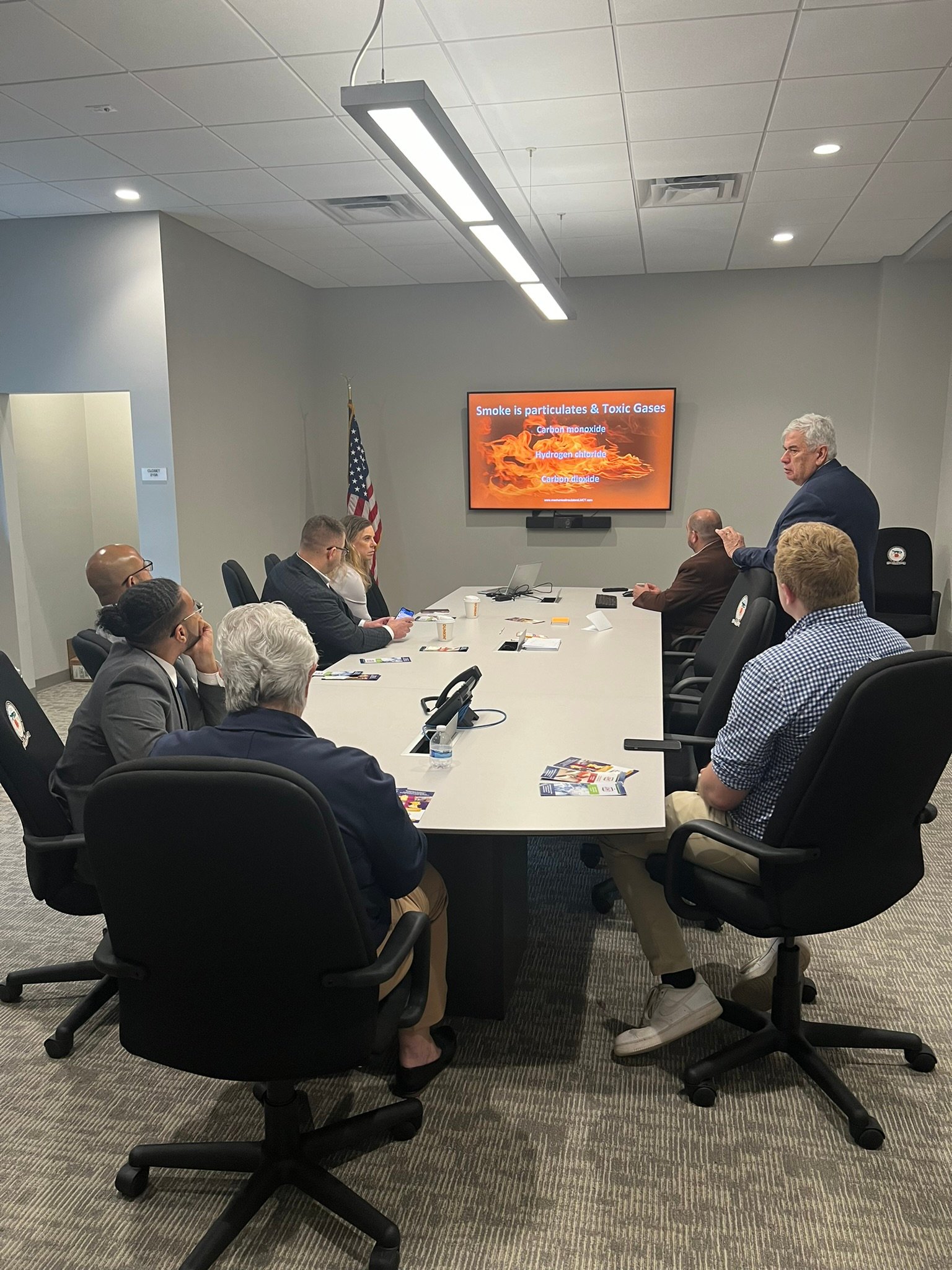
Together, the group discussed the following:
Mechanical Insulation:
- How Mechanical Insulation can benefit the building owner by meeting many sustainability standards.
- Lowers operation costs to create a savings that will offer budgetary funding for other building initiatives.
- Explanation of the Mechanical Insulation Energy Appraisal (MIEA).
- How an MIEA can be performed to evaluate realistic return on investments.
Firestop and Smokeseal:
- What is Firestop and Smokeseal technology?
- The many complexities of installing these technologies, which require the proper training.
- The importance of saving lives through a properly trained workforce.
Additionally, LMCT Deputy Director Gina Walsh offered many insightful comments on how the Mechanical Insulation industry saves money and lives, plus creates career opportunities for members of the community.
All the government officials were impressed by the values of both Mechanical Insulation and Firestop, and admitted that prior to the meeting, they were not aware these technologies even existed.
While the 3-hour event focused on the two main topics, a great deal of emphasis was also placed on the ability of registered apprenticeship training to develop a workforce that is competent to meet the rigorous installation needs of these technologies.
Sheriff and Kornegay both said they were impressed by the presentation and wanted to incorporate both technologies into the department’s building inspection process, including Mechanical Insulation Energy Audits.
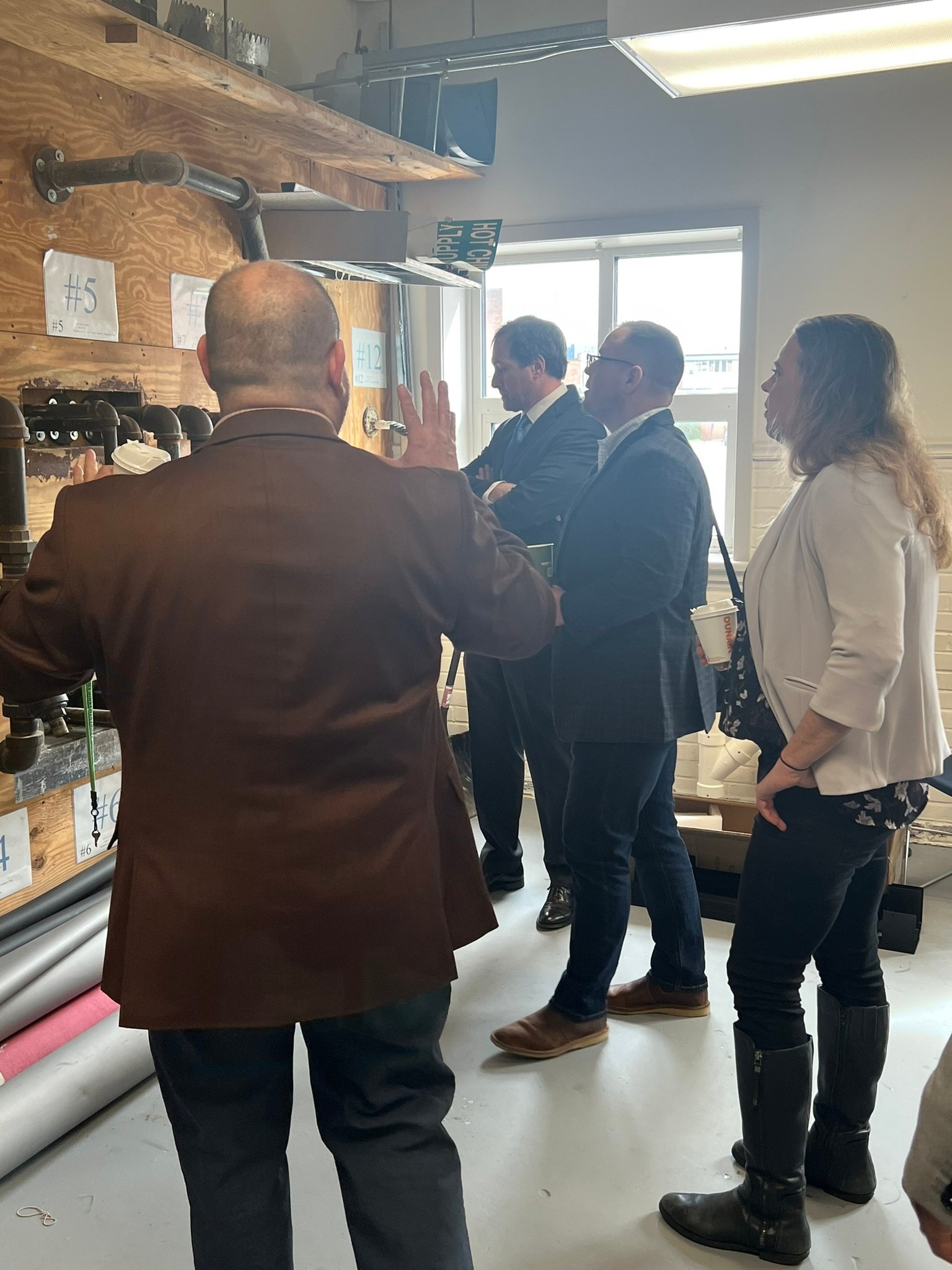
While optimistic, Kornegay also acknowledged the government does not move quickly.
“There is a process,” he said. “It might take some time, but we want to investigate what we can do.”
In order to help the investigative process, HUD may allow the LMCT to perform a Firestop and Mechanical Insulation written evaluation and inspection on a pilot building to demonstrate the energy savings and proper life safety firestop awareness.
The LMCT looks forward to developing a stronger relationship with HUD, as it looks to help the agency save taxpayer dollars and lives.
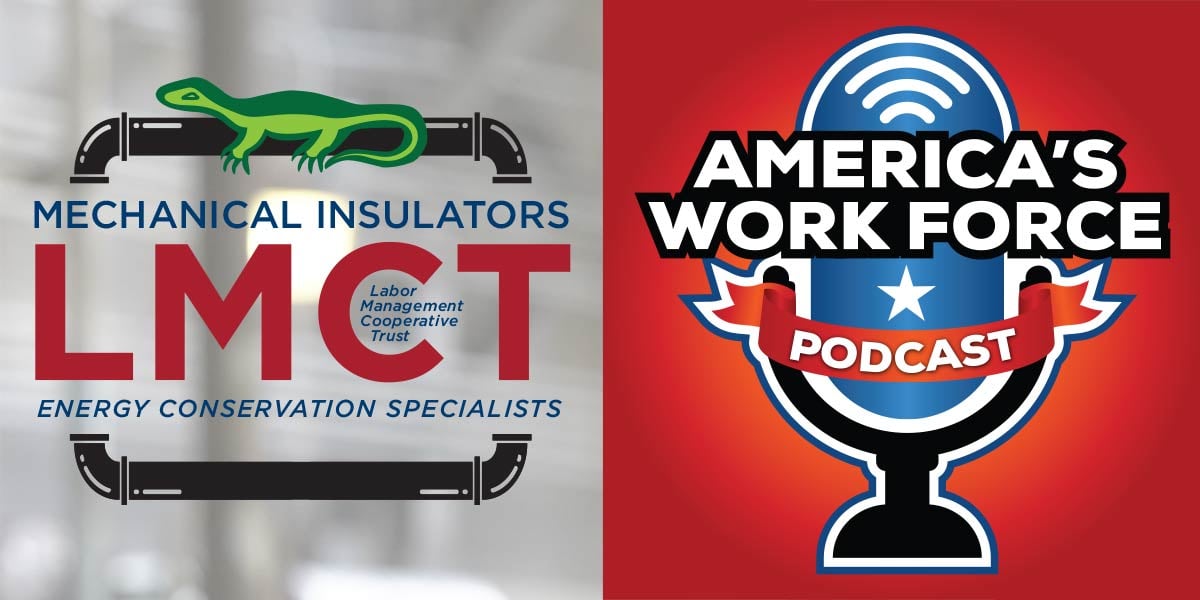
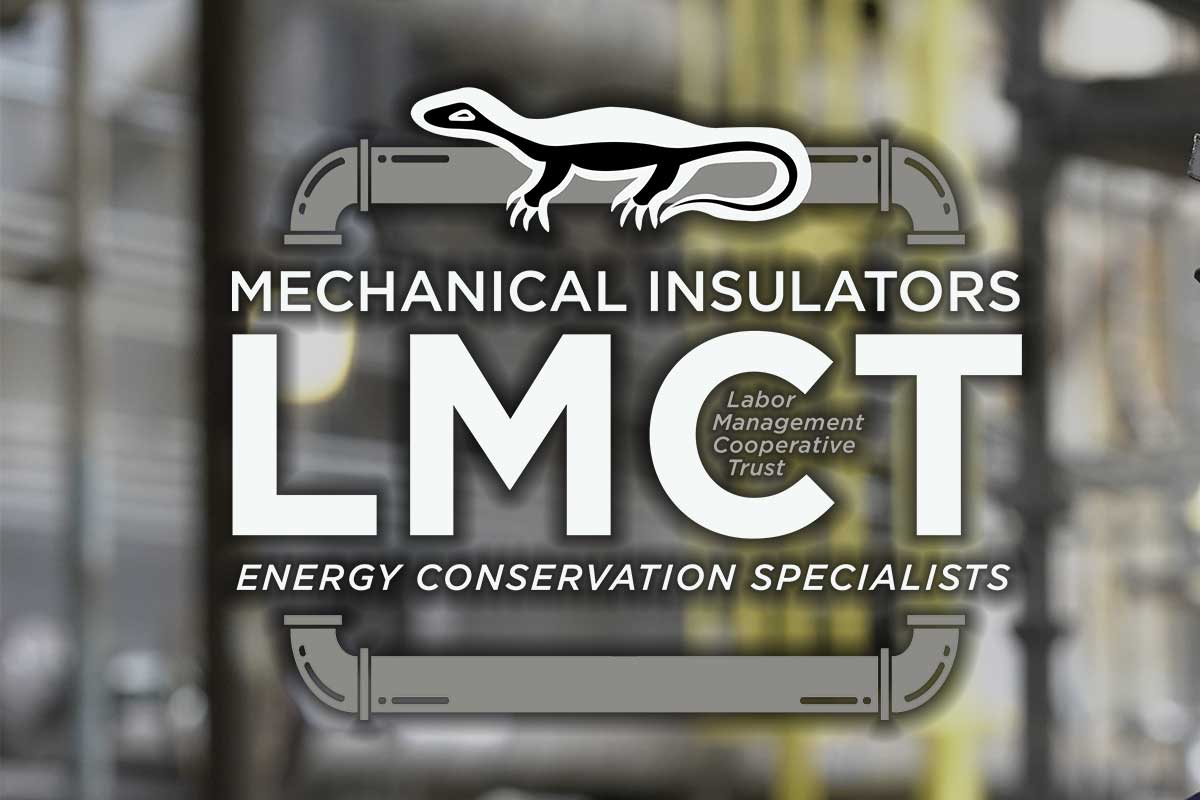
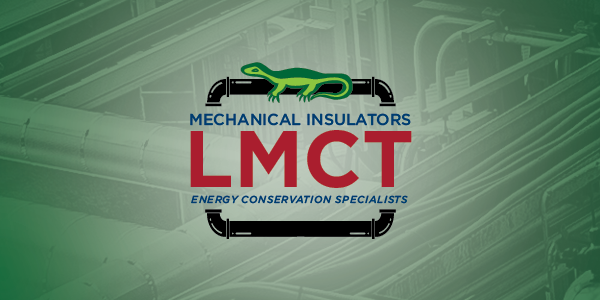
Comments